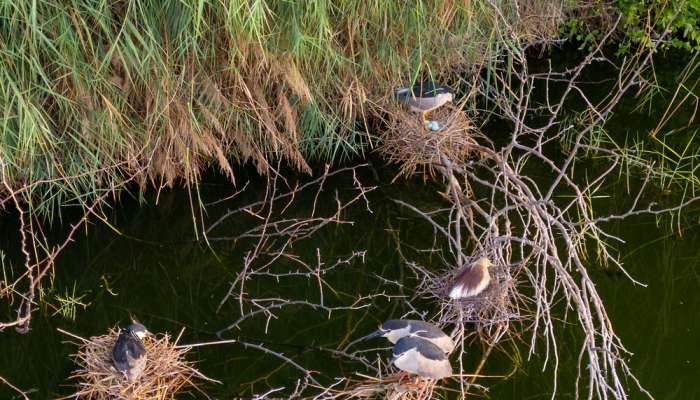Al Ansab Wetland in Muscat has recently made headlines with the discovery of two significant bird species: the Black-crowned Night Heron and the Indian Pond Heron. These findings highlight the wetland’s critical role in bird conservation and biodiversity. The Indian Pond Heron, which has been recorded breeding in Oman for the first time, signifies a milestone in the country’s ornithological history. The presence of these species demonstrates the diverse habitats within Al Ansab Wetland that support uncommon breeding activities. Moreover, the Black-crowned Night Heron’s breeding in the northern region for the first time emphasizes the wetland’s expanding ecological significance.
The recent discoveries at Al Ansab Wetland underscore its importance as a sanctuary for a wide variety of bird species. The wetland’s thriving ecosystem is a result of dedicated conservation efforts that have maintained its ecological balance. As a crucial site for bird conservation, Al Ansab Wetland plays a significant role in preserving biodiversity. Ms. Manal Al Kindi, Head of Wetland from Nama Water Services, emphasizes the necessity of ongoing preservation initiatives to ensure that the wetland remains a sanctuary for birds and a natural treasure for Oman. The new breeding records serve as a reminder of the importance of protecting and preserving wetlands to maintain global biodiversity.
Al Ansab Wetland’s reputation as a key site for biodiversity has attracted bird watchers, researchers, and nature enthusiasts from around the world. The recent discoveries of the Indian Pond Heron and the Black-crowned Night Heron further highlight the need to protect such habitats for future generations. Conservationists are calling for sustained efforts to safeguard Al Ansab Wetland, which remains a critical resource for the region’s natural heritage. The wetland’s thriving ecosystem not only supports a wide array of bird species but also plays a crucial role in maintaining the balance of nature in the region.
As a beacon of biodiversity in the Arabian Peninsula, Al Ansab Wetland continues to be a hotspot for bird conservation and a vital sanctuary for numerous species. The discoveries of the Black-crowned Night Heron and the Indian Pond Heron further solidify the wetland’s importance in maintaining biodiversity. The wetland’s expanding ecological significance and diverse habitats provide a conducive environment for uncommon breeding activities. With ongoing conservation efforts, Al Ansab Wetland remains a key site for bird conservation and a natural treasure for Oman, highlighting the crucial role of wetland preservation in maintaining global biodiversity.
In conclusion, Al Ansab Wetland’s recent discoveries of the Black-crowned Night Heron and the Indian Pond Heron emphasize the wetland’s critical role in bird conservation and biodiversity. The expanding ecological significance of the wetland, along with its diverse habitats, provide a sanctuary for numerous bird species. As a global habitat supporting a wide range of bird species, Al Ansab Wetland serves as a reminder of the importance of preserving wetlands for future generations. Conservation efforts are essential to protect and maintain the wetland’s thriving ecosystem, ensuring biodiversity and natural heritage in the region.































